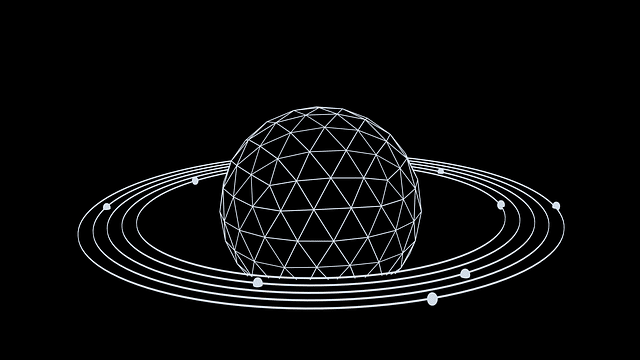
The spheroid is a surface similar to the sphere, but not all its points are equidistant from the center.
The Greek word sphairoeidḗs came into Latin as sphaeroīdes . That is the closest etymological antecedent of spheroid , a term in our language that refers to a body whose shape is similar to that of a sphere .
Similar to a sphere
For its part, a sphere is called a solid that is defined by a curved surface, whose points are equidistant from the center. Spheroids, in short, are similar to spheres.
A spheroid is an ellipsoid of revolution : it is generated by rotating an ellipse around a principal diameter.
Other celestial bodies and astronomical objects are also part of the spheroid group. Among them we can name Haumea (a dwarf planet) and Tethys (a moon of Saturn ).
The Cartesian equation of this very particular surface is the following: (x 2 + y 2 ) / a 2 + z 2 / c 2 = 1 . For this to be valid, the center of the spheroid must be located at the very origin of the Cartesian coordinates. The variables a and c represent their semi-axes, and the segment c is located on the Z axis (which is usually associated with the depth of three-dimensional figures).
Classification
There are different kinds of spheroids according to their characteristics and properties. The axis of symmetry , which is located on the Z axis of the Cartesian coordinates , is named with the letter C , while the axis that is perpendicular to the axis of symmetry is called A.
When C is smaller than A , it is an oblate spheroid . On the other hand, if C is greater than A , the spheroid is defined as oblong . It is important to clarify that if C and A are equal, the surface in question is a sphere .
The oblate spheroid has flattened planes . Various planets exhibit the shape of an oblate spheroid, including Earth . The oblong spheroid , on the other hand, has an equatorial diameter smaller than the polar axis , as in the case of the ball used in American football .
Haumea
This dwarf planet is located further from Neptune's orbit, in the so-called Kuiper belt . Although it was already known by 2003, it was not until 2008 that it was properly classified and named by the International Astronomical Union (UAI). Her name is the same as the goddess of birth from Hawaiian mythology .
Regarding its discovery, it was carried out in 2003 by a group of researchers led by the Spanish astronomer José Luis Ortiz Moreno , at the Sierra Nevada Observatory, located in the province of Granada. Since the following year another team claimed to have discovered it first, in this case an American one under the direction of Mike Brown , the IAU did not officially recognize either of them. However, in its own database and in other reliable sources it appears first.

Tethys, a moon of Saturn, is a spheroid.
Thetis
As mentioned above, Tethys is one of Saturn's moons. More specifically, it is the largest fifth: its approximate diameter is 1060 kilometers. It is located 294,619 kilometers away from Saturn. It was discovered by the French astronomer Giovanni Domenico Cassini in 1684. Of the largest satellites in the solar system , it is the one with the lowest density, because its composition is mostly water ice.
One of the characteristics of this spheroid satellite is that it has many craters and various extensive faults. The largest crater is known as Odysseus , and its approximate diameter is 400 kilometers; Its most extensive fault, on the other hand, is the Ithaca Chasma , with a length exceeding 2,000 kilometers. Although it has not been proven, it is believed that there is a connection between these two immense structures.
